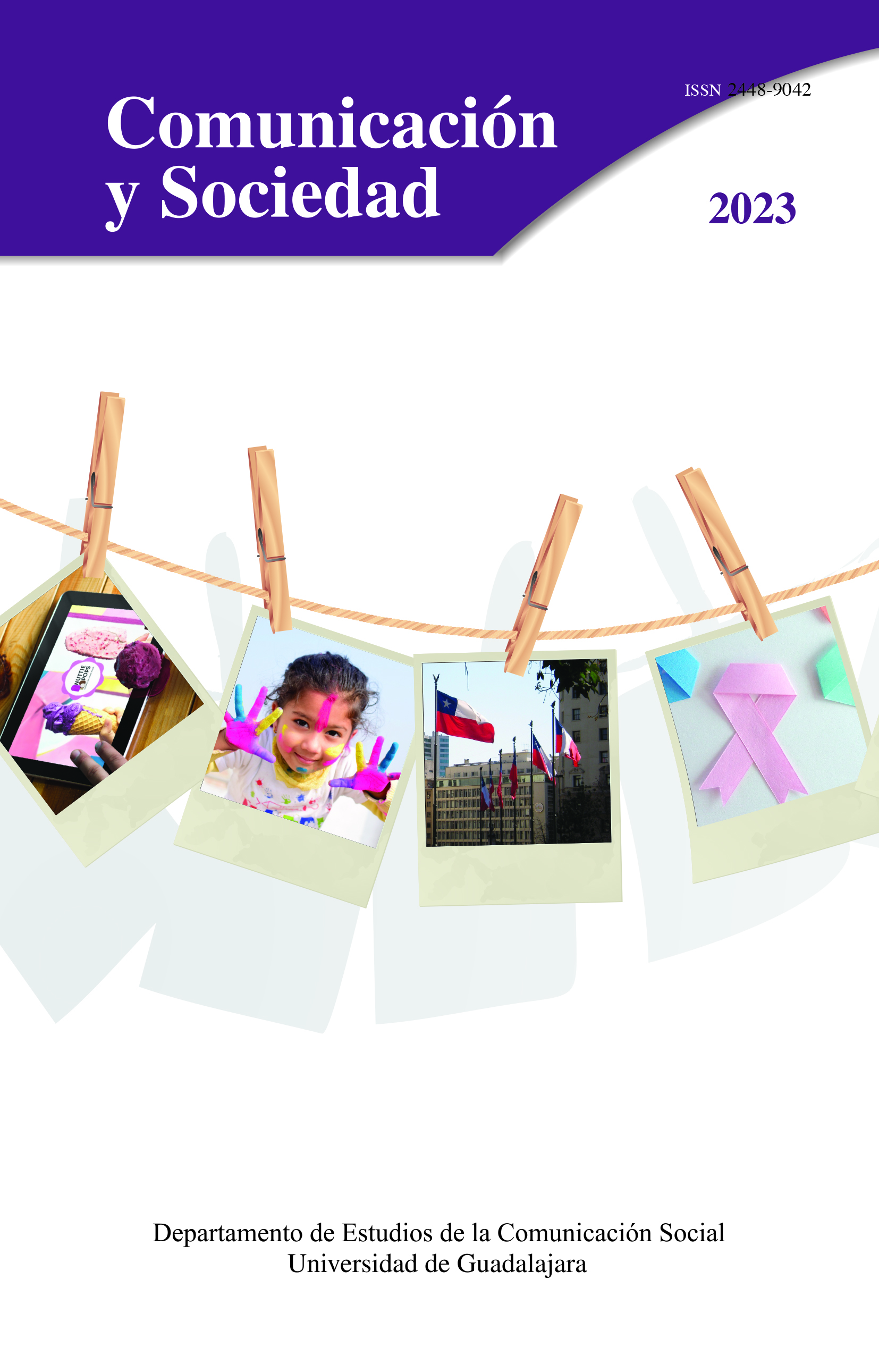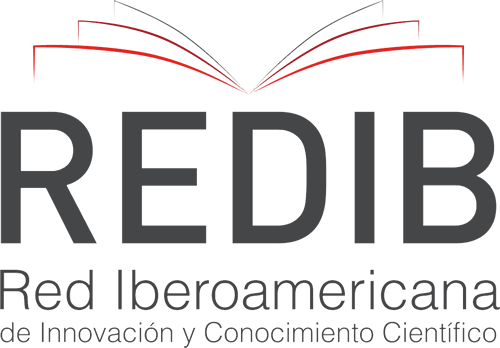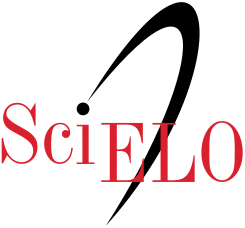Los contenidos, los actores y los intereses detrás de las noticias falsas. Un análisis de los bulos verificados en España y Colombia
DOI:
https://doi.org/10.32870/cys.v2023.8518Palabras clave:
Desinformación, Actores afectados, Actores promotores, Intereses, Noticias falsasResumen
Esta investigación analiza el contenido de 416 noticias falsas identificadas durante el primer semestre de 2021 por Maldita.es y Newtral.es, de España, y Colombiacheck y La Silla Vacía, de Colombia. Los resultados muestran que la mayoría de los autores de las noticias falsas son anónimos y que estas perjudican especialmente a los gobiernos de turno y otros funcionarios públicos. Los intereses de los actores promotores son político-gubernamentales, político-institucionales y reputacionales. El estudio también da cuenta de las temáticas, formatos y canales de distribución de las noticias falsas.Descargas
Citas
Aguado-Guadalupe, G. & Bernaola-Serrano, I. (2020). Verification in the covid-19 infodemic. Newtral’s case study. Revista Latina de Comunicación Social, 2020(78), 289–308. https://doi.org/10.4185/RLCS-2020-1478
Al-Zaman, M. S. (2020). covid-19-Related Fake News in Social Media. ssrn Electronic Journal, 1–12. https://doi.org/10.2139/ssrn.3644107
Al-Zaman, M. S. (2021). covid-19-Related Social Media Fake News in India. Journalism and Media, 2(1), 100–114. https://doi.org/10.3390/journalmedia2010007
Atehortua, N. A. & Patino, S. (2021). covid-19, a tale of two pandemics: Novel coronavirus and fake news messaging. Health Promotion International, 36(2), 524–534. https://doi.org/10.1093/heapro/daaa140
Bakir, V. & McStay, A. (2018). Fake News and The Economy of Emotions: Problems, causes, solutions. Digital Journalism, 6(2), 154–175. https://doi.org/10.1080/21670811.2017.1345645
Baptista, J. P. & Gradim, A. (2020). Understanding fake news consumption: A review. Social Sciences, 9(10), 1–22. https://doi.org/10.3390/socsci9100185
Blanco-Herrero, D. & Arcila-Calderón, C. (2019). Deontología y noticias falsas: estudio de las percepciones de periodistas españoles TT - Deontology and fake news: A study of the perceptions of Spanish journalists. El Profesional de La Información, 28(3), 1. https://doi.org/10.3145/epi.2019.may.08
Bradshaw, S. & Howard, P. (2017). Troops, Trolls and Troublemakers: A Global Inventory of Organized Social Media Manipulation. En Computational Propaganda Research Project (pp. 1–37). Oxford Internet Institute.
Cabo Isasi, A., & García Juanatey, A. (2016). El discurso del odio en las redes sociales: Un estado de la cuestión. Ajuntament de Barcelona. https://ajuntament.barcelona.cat/bcnvsodi/wp-content/uploads/2015/03/Informe_discurso-del-odio_ES.pdf
Castillo-de-Mesa, J., Méndez-Domínguez, P., Carbonero-Muñoz, D. & Gómez-Jacinto, L. (2021). Homophilia, affective polarisation and misinformation on Twitter. Case study on the #Openarms migration crisis. Redes. Revista Hispana Para El Análisis de Redes Sociales, 32(2), 153. https://doi.org/10.5565/rev/redes.913
Chadwick, A., Vaccari, C. & O’Loughlin, B. (2018). Do tabloids poison the well of social media? Explaining democratically dysfunctional news sharing. New Media and Society, 20(11), 4255–4274. https://doi.org/10.1177/1461444818769689
Edelman. (2021a). 21 st ANNUAL EDELMAN TRUST. En Edelman Trust Barometer 2021. https://www.edelman.com/sites/g/files/aatuss191/files/2021-03/2021%20Edelman%20Trust%20Barometer.pdf
Edelman. (2021b). Edelman Trust Barometer 2021: Colombia. https://www.edelman.lat/sites/g/files/aatuss296/files/2021-04/ESP_Deck_Trust_2021_0.pdf
García-Perdomo, V. (2021). Colombia. Reuters Institute for the Study of Journalism. https://reutersinstitute.politics.ox.ac.uk/es/digital-news-report/2021/colombia
Gutiérrez-Coba, L., Coba-Gutiérrez, P. & Gómez-Díaz, J. A. (2020). Fake news about covid-19: A comparative analysis of six iberoamerican countries. Revista Latina de Comunicacion Social, 78, 237–264. https://doi.org/10.4185/RLCS-2020-1476
Han, B.-C. (2014). En el enjambre (1era ed). Herder Editorial.
Hayes, A.F. & Krippendorff, K. (2007). Answering the call for a standard reliability measure for coding data. Communication Methods and Measures, 1(1), 77-89. https://doi.org/10.1080/19312450709336664
Directorate-General for Communications Networks, Content and Technology. (2018). A multi-dimensional approach to disinformation. Report of the independent High level Group on fake news and online disinformation. European Commission. https://doi.org/10.2759/0156
Hutchings, S. (2017). Fake news and ‘post truth’: some preliminary notes. Russian Journal of Communication, 9(2), 212–214. https://doi.org/10.1080/19409419.2017.1323178
Kalsnes, B. (2018). Fake News. Oxford Research Encyclopedia of Communication. https://doi.org/10.1093/ACREFORE/9780190228613.013.809
Kelly, S., Truong, M., Shahbaz, A., Earp, M. & White, J. (2017). Manipulating Social Media to Undermine Democracy. Freedom House. https://freedomhouse.org/report/freedom-net/2017/manipulating-social-media-undermine-democracy
Khaldarova, I. & Pantti, M. (2016). Fake News: The narrative battle over the Ukrainian conflict. Journalism Practice, 10(7), 891–901. https://doi.org/10.1080/17512786.2016.1163237
Lomelí Ponce, J. (2019). Posverdad y psicopolítica. Análisis, 51(95 (Jl-Di)), 347–364. https://doi.org/10.15332/21459169.4475
Lutz, B. & Padilla, A. (2012). El rumor del nopal chino: construcción institucional y efectos sociales de noticias falsas. Comunicación y Sociedad, (17), 179–204. https://doi.org/10.32870/cys.v0i17.279
Maldita.es. (2021, 11 de junio). La historia de la falsa alerta policial Manitas Limpias: el bulo por el que nos habéis preguntado más de 1.000 veces. https://maldita.es/malditobulo/20210611/bulos-zombies-manos-limpias/
Marwick, A. & Lewis, R. (2017). Media Manipulation and Disinformation Online. Data & Society Research Institute. https://datasociety.net/library/media-manipulation-and-disinfo-online/
Narwal, B. (2018). Fake News in Digital Media. 2018 International Conference on Advances in Computing, Communication Control and Networking (icacccn), 977–981. https://doi.org/10.1109/ICACCCN.2018.8748586
Negredo, S., Amoedo, A., Vara, A., Moreno, E. & Kaufmann, J. (2021). España. Reuters Institute for the Study of Journalism. https://reutersinstitute.politics.ox.ac.uk/es/digital-news-report/2021/espana
Newman, N., Richard Fletcher, W., Schulz, A., Andı, S. & Kleis Nielsen, R. (2020). Digital News Report 2020. https://reutersinstitute.politics.ox.ac.uk/si
Pascual, M. I. (2020, 2 de junio). Por qué los bulos triunfan a pesar de Internet. National Geographic España. https://www.nationalgeographic.com.es/ciencia/por-que-siguen-triunfando-bulos-a-pesar-internet_15428
Pennycook, G. & Rand, D. G. (2021). The Psychology of Fake News. Trends in Cognitive Sciences, 25(5), 388–402. https://doi.org/10.1016/j.tics.2021.02.007
Peña-Ascacíbar, G. P., Malumbres, E. B. & Zanni, S. (2021). Fact checking during covid-19: A comparative analysis of the verification of false contents in Spain and Italy. Revista de Comunicación, 20(1), 197–215. https://doi.org/10.26441/RC20.1-2021-A11
Posetti, J. (2018). News Industry Transformation: Digital Technology, Social Platforms and the Spread of Misinformation and Disinformation. En C. Ireton & J. Posetti (Eds.), Journalism, Fake News, & Disinformation: Handbook for Journalism Education and Training (pp. 57–72). unesco.
Rodríguez Pérez, C. (2020). Una reflexión sobre la epistemología del fact-checking journalism: retos y dilemas. Revista de Comunicación, 19(1), 243–258. https://doi.org/10.26441/rc19.1-2020-a14
Rodríguez Pérez, C., Ortiz Calderón, L. S. & Esquivel Coronado, J. P. (2021). Desinformación en contextos de polarización social: el paro nacional en Colombia del 21N. Anagramas Rumbos y Sentidos de La Comunicación, 19(38), 129–156. https://doi.org/10.22395/angr.v19n38a7
Rodríguez Salamanca, L. (2021, 10 de mayo). No es verdad que la agente de policía de esa foto ‘presenció la violación de una joven pereirana’. ColombiaCheck. https://colombiacheck.com/chequeos/no-es-verdad-que-la-agente-de-policia-de-esa-foto-presencio-la-violacion-de-una-joven
Rodríguez Salamanca, L. (2021, 4 de junio). De nuevo, esta mujer no fue golpeada en Bosa por la Policía por ‘vender ropa en un andén’. ColombiaCheck. https://colombiacheck.com/chequeos/de-nuevo-esta-mujer-no-fue-golpeada-en-bosa-por-la-policia-por-vender-ropa-en-un-anden
Rossini, P., Stromer-Galley, J., Baptista, E. A. & Veiga de Oliveira, V. (2021). Dysfunctional information sharing on WhatsApp and Facebook: The role of political talk, cross-cutting exposure and social corrections. New Media and Society, 23(8), 2430–2451. https://doi.org/10.1177/1461444820928059
Salaverría, R., Buslón, N., López-Pan, F., León, B., López-Goñi, I. & Erviti, M. C. (2020). Desinformación en tiempos de pandemia: tipología de los bulos sobre la covid-19. Profesional de La Información, 29(3), 1–15. https://doi.org/10.3145/epi.2020.may.15
Sánchez-de-la-Nieta, M.-Á. & Fuente-Cobo, C. (2020). Periodismo vs desinformación: la función social del periodista profesional en la era de las fake news y la posverdad. Sintaxis, 1(4), 1–18. https://doi.org/10.36105/stx.2020n4.01
Tandoc, E. C., Lim, Z. W. & Ling, R. (2018). Defining “Fake News”: A typology of scholarly definitions. Digital Journalism, 6(2), 137–153. https://doi.org/10.1080/21670811.2017.1360143
Tandoc, E. C., Thomas, R. J. & Bishop, L. (2021). What is (Fake) news? Analyzing news values (and more) in fake stories. Media and Communication, 9(1), 110–119. https://doi.org/10.17645/mac.v9i1.3331
Vafeiadis, M. & Xiao, A. (2021). Fake news: How emotions, involvement, need for cognition and rebuttal evidence (story vs. informational) influence consumer reactions toward a targeted organization. Public Relations Review, 47(4), 102088. https://doi.org/10.1016/j.pubrev.2021.102088
Valenzuela, S., Halpern, D., Katz, J. E. & Miranda, J. P. (2019). The Paradox of Participation Versus Misinformation: Social Media, Political Engagement, and the Spread of Misinformation. Digital Journalism, 7(6), 802–823. https://doi.org/10.1080/21670811.2019.1623701
Vosoughi, S., Roy, D. & Aral, S. (2018). The spread of true and false news online. Science, 359(6380), 1146–1151. https://doi.org/10.1126/science.aap9559
Waisbord, S. (2018). Truth is What Happens to News: On journalism, fake news, and post-truth. Journalism Studies, 19(13), 1866–1878. https://doi.org/10.1080/1461670X.2018.1492881
Wardle, C. (2017, 14 de marzo). Noticias falsas. Es complicado. First Draft. https://firstdraftnews.org/articles/noticias-falsas-es-complicado/
Wardle, C. & Derakhshan, H. (2018). Thinking about ‘information disorder’: formats of misinformation, disinformation, and mal-information. Journalism, “Fake News” & Disinformation, 43–54. https://en.unesco.org/sites/default/files/f._jfnd_handbook_module_2.pdf
Zhang, X. & Ghorbani, A. A. (2020). An overview of online fake news: Characterization, detection, and discussion. Information Processing and Management, 57(2), 102025. https://doi.org/10.1016/j.ipm.2019.03.004
Descargas
Publicado
Cómo citar
Número
Sección
Licencia

Esta obra está bajo una licencia internacional Creative Commons Atribución-NoComercial 4.0.
Los autores/as que publiquen en esta revista aceptan las siguientes condiciones:
De acuerdo con la legislación de derechos de autor, los autores conservan los derechos de autoría y otorgan a Comunicación y Sociedad el derecho de primera comunicación pública de la obra. Comunicación y Sociedad no realiza cargos a los autores por enviar y procesar artículos para su publicación.
Los autores/as pueden realizar otros acuerdos contractuales independientes y adicionales para la distribución no exclusiva de la versión del artículo publicado en Comunicación y Sociedad (por ejemplo incluirlo en un repositorio institucional o publicarlo en un libro) siempre que indiquen claramente que el trabajo se publicó por primera vez en Comunicación y Sociedad.











